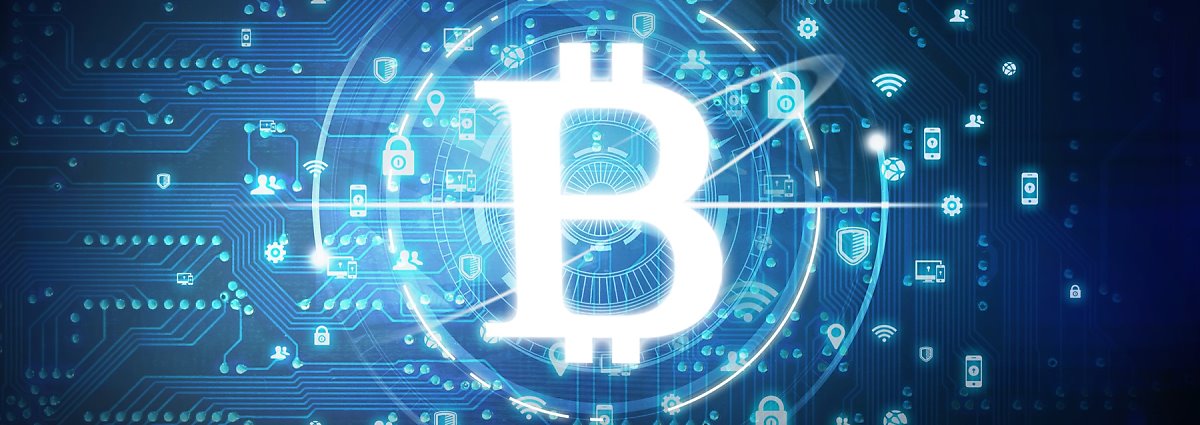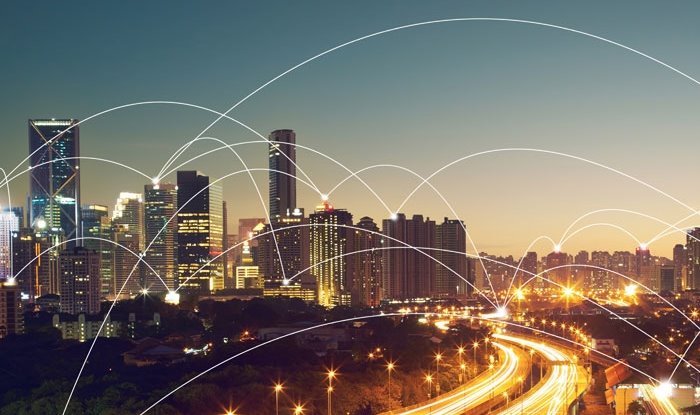 Blockchain, Infrastructure Technology for Virtual Currency
Blockchain, Infrastructure Technology for Virtual Currency
Everyone Knows Bitcoin, But Not Many Knows Blockchain
Over the years, there have been discussions on the banking technology (also known as Fintech) and the virtual currency. What has led these topics was definitely Bitcoin.
Bitcoin, invented and distributed by an unidentified programmer, or a group of programmers, under the alias of 'Satoshi Nakamoto', is the currency that is not controlled by any central government of any country and gets attentions and checks at the same time.
While Bitcoin is well known to the public, surprisingly only few are well aware of Blockchain, which is the infrastructure technology underscoring this virtual currency.
Even the Washington Post jokingly mentioned in the article titled The List 2017 at the beginning of this year: 'if you are not able to explain what is Bitcoin, you are Out (from the mainstream society)' and 'if you are unable to explain what is Blockchain, you are In (included in the mainstream society).'
No wonder, it is because the Blockchain technology itself is based on the principle that is difficult to describe in a few words.
Bitcoin Is an Application of Blockchain Technology.

For readers who are unfamiliar with the technology, many journalists are putting it this way:, 'if Bitcoin is an application, Blockchain is an operating system behind it', or 'Bitcoin is simply one of the applications utilizing the Blockchain technology.' However, such analogy cannot explain what the Blockchain technology itself is.
In this column, I will try to explain this Blockchain technology for readers interested in the IT technology, just like you.
Blockchain technology is 'a technology for keeping transaction records'.
Under various situations where transactions are made, such as buying and selling goods (e.g., marketplace), or depositing and withdrawing money (e.g., bank), there is a great need to leave records that money or goods are exchanged. Ledgers are used for such purposes.
But if you were so busy and forget to record the transaction into your ledger? What if a party recorded the number incorrectly? Further, if a record related to a transaction is tampered maliciously?
Imagine that a person deposited 10 million dollars in a bank, but it was recorded that only 1 million dollars is deposited in the bank. This is a nightmare that can happen to anyone, even today.
Monetary records up to now have been exposed to such risks. To prevent such risks, enterprises and organizations whose transaction size is big (in other words, organizations vulnerable to great mistakes) used to audit their ledgers regularly through the help of experts (i.e., accountant).
Blockchain leaves a record each time when a transaction takes place and this record is left open to the public so that anyone can view and/or copy the record, focusing on preventing any recording mistake or intentional tampering.
Suppose John sends money to Jane for example. Computers (or smart devices) on both sides create the money exchange record. A chunk of data (data block) that contains the record that 'John sent 000 dollars to Jane' is created in this way. And this data block is left open to the Internet mainly for those who have relationships (I mean, who trades with) with John and Jane.
Then, if Jane sends the money received from John to James to buy something from him, a new data block with information that says 'Jane sent 000 dollars to James' is created. At this moment, the data block containing previous transaction record between John and Jane is connected to this piece of new record.
So, if you trace the chain of data blocks, you can how money has been exchanged. Since these records (or data blocks) are available on the internet, anybody can check it out. Also, the records are copied to computers of other people (mostly in the process of checking it). Even if someone tries to tamper a block, such tampering attempt is discovered immediately in the verification process as many more replicas of its original block are already distributed. In other words, even if a record within a block saved in a person's computer is falsified, the tampered block won't be recognized as the original block in the verification process under the principle 'the block that is overwhelmingly widely distributed would be the original block'.
The key idea for maintaining the Blockchain security is to 'make the transaction record available to everyone, so that they can copy and distribute the record on the Internet widely and overwhelmingly, eliminating the possibility of tampering'. This is what people mean by ‘Blockchain being a distributed ledger’ and 'transaction authorization and information being democratized.'
Blockchain, IT Technology that Will Change the World.

People often say, ‘Blockchain technology is to the banking companies what TCP/IP technology is to telecommunication service providers'. To see what it means, let's look back how TCP/IP technology has been disseminated.
TCP/IP technology was introduced in 1972 for the first time to share emails between network developers on the ARPAnet of U.S. Department of Defense.
Until then, telecommunication service providers that managed telephone networks used the circuit switching technology. To do so, everyone connected to the network had to be connected to a switching device via a dedicated telecommunication cable. Of course, it is obvious that tremendous cost was required to install the switching device one by one and manage them afterwards. However, TCP/IP changed this fundamentally.
The sender uses the technology to divide a message created in a digital format into small fragments (packets) and send them on the network together with the recipient information tagged to it. The recipient receives these fragments and build them back to reconstruct the original message. TCP/IP does not need dedicated telecommunication cables that connect terminals to switching devices as in telephones or telegraph systems, allowing telecommunication service providers to build and manage the gigantic telecommunication networks with low cost.
The banking industry predicts that Blockchain technology will have a great impact on the banking system.
As explained previously, in a Blockchain, all the devices (computers, smart phones, etc.) connected to the network frequently view, copy and store data blocks containing transaction records individually. While past transaction systems were vulnerable to errors and tampering since all the terminals inquired the transaction record located at the center of the network, Blockchain technology ensures safety through its transparency since all the terminals in the network inquire each other. In an interview with the media, Jeremy Gardner, an officer of a Blockchain training network, argued that Blockchain technology will provide high transparency to various areas including the banking industry, and enable transparent auditing to the level that the world has never been seen before.
Blockchain, How Will It Be Used?
The reason why the banking industry is paying great attention to Blockchain technology is simple: it is because the banking industry carries out activities so called ‘transactions’ the most among industries.
In other words, the Blockchain technology may be used anywhere as long as transactions are made.
Let's take Haiti as an example, the small island country that was devastated by an earthquake of magnitude 7.0 in 2010. This earthquake killed more than 200,000 people, destroyed lots of buildings and dealt a blow to the Haitian government as well. Lots of government buildings were destroyed and various records also disappeared in the process. Due to the earthquake, Haiti’s real estate market was completely disrupted. When the government tried to restore the real estate registrar, multiple people claimed ownership for the same properties in many areas. The loss of records due to the earthquake destroyed confidence in the government.
How would it have been different if the Haitian government had managed real estate records using the Blockchain technology before the earthquake?
Even though the magnitude of the earthquake was tremendously big, it could have not destroyed every single computer all over the entire country. In this case, the Blockchain system would have automatically restored the real estate transaction records from fragments (data blocks) of transaction data scattered throughout computers that survived the disaster. Hence the catastrophic situation that occurred in the market would have been avoided.
As a matter of fact, there are countries that put this idea into action. In February of year 2017, the Georgian government signed an agreement with a technology firm, Bitfury to manage real estate transactions and ownership information using the Blockchain technology. Tea Tsulukiani, Minister of Justice, Georgia, told the press that the Blockchain technology will be used to manage real estate information beginning this summer.
There are countries that already manage real estate records in the scale smaller than the Republic of Georgia.
In Ghana, farmland ownership records are managed by the platform called Bitland, which uses the Blockchain technology. Based on the experience in Ghana, the Bitland team plans to expand the service to Kenya, Uruguay, etc.
The Dubai government is pursuing a much more ambitious plan. Hamdan bin Mohammed, the Crown Prince of Dubai, announced Dubai Blockchain Strategy, according to which the Dubai government will use the Blockchain technology on every transaction it carries out by the 2020. He posted a message on Twitter: "The Dubai Blockchain Strategy also aims to unlock 25 million hours of economic productivity annually in saved document processing time."
Needless to go far away, it was common even in the past Korea that people altered their identities by abusing the loss of birth records managed by the government during the war. Blockchain technology can prevent this – unless one accesses and tampers the data stored in every computer connected to the governmen’s computing network all over the country. This is the reason why Rosanna Chan, an economist who organized the Blockchain working group in World Bank, called the Blockchain technology as the 'magic ledger' last year.
The Moment When the Term ‘Blockchain’ Disappears Is When the Blockchain Revolution Completes.

Blockchain technology does not necessarily exchange information with every computer all around the world through the Internet. It is also possible to apply the technology to company’s intranet, or closed networks to which only authorized companies are connected. For instance, it is possible to apply Blockchain technology to the networks that companies such as Starbucks and Wal-Mart operate for gift card operation, with reduced cost and effort to operate the system.
In April this year, Samsung SDS announced Nexledger, an enterprise Blockchain platform. Also introduced were Digital Identity, a Blockchain ID service, and a paymentsolution for it. Samsung SDS's Nexledger is a universal Blockchain platform applicable to not only the banking industry but also other industries.
Today, the term Bitcoin is widely known and many people try to understand what Blockchain is. However, when this phase is over, the technological term 'Blockchain' will be used no longer among the general public.
In an interview with the banking magazine American Banker held in March 2016, Adam Draper, a venture capitalist, said “In three years, no one is going to be saying blockchain, but everyone is going to be using the blockchain.”
To make his point, he also said, “I don't say I'm going to TCP/IP you — I say I'm going to text you.”
This is exactly the point anyone in any industry needs to get serious about Blockchain technology – when people stops using the word, the change will be over and it will be too late.
▶ The contents are protected by copyrights laws and the copyrights are owned by the creator.
▶ Re-use or reproduction as well as commercial use of the contents without prior consent is strictly prohibited.

Professor Park Byungho received a Ph.D. from Indiana University in 2006 and was a professor of the Department of New Media at the National University of Singapore. Currently Professor Park is a professor at KAIST Business School. While lecturing to MBA students at KAIST, he has been conducting extensive activities such as research and industry advisory activities as a director of Information and Media Research Center. Prof. Park is mainly engaged in the domain, encompassing advertising, PR, information media consumer research, and convergence of management and brain science.
- NFT, Would It Be Used for Anything Other than Collecting?
-
[Technology Toolkit]
Easy and Simple Blockchain Management, Nexledger! - Introducing Maritime Blockchain Project to World Customs Officers
- Samsung SDS’s Blockchain Platform Nexledger Goes Global Beyond Korea
- [Video] What Can Nexfinance™ Do for You and Your Business?
- Samsung SDS Leads Digital Innovation with Blockchain Platform Nexledger™
